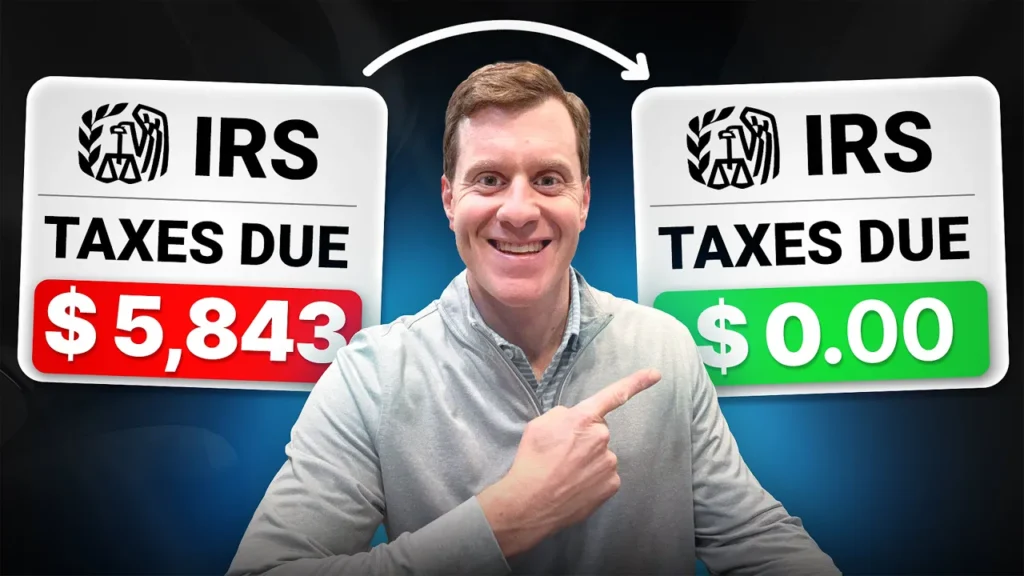
Tax season shouldn’t be a surprise, and it definitely shouldn’t be something you dread. Yet, every year, high-income professionals find themselves overpaying or scrambling to cover unexpected tax bills. The truth? Most tax issues stem from a lack of planning and common misconceptions. In this post, you’ll discover how to legally reduce your tax bill using deductions, credits, and investment strategies tailored for 2025.
Why Most People Overpay Taxes
Let’s bust a myth: tax refunds aren’t a gift, they’re proof that you overpaid throughout the year. Employers often withhold more than necessary to avoid underpayment penalties, but that just means your money sits with the IRS earning zero interest. Add in side gigs, bonuses, or equity comp, and you’ve got a recipe for miscalculation.
Worse? Most people don’t plan ahead. They react in April instead of preparing in January. That’s a costly mistake.
Watch Our Video Guide Below
Prefer a visual breakdown? Watch our full video guide for a walkthrough of 2025’s smartest tax-saving strategies, perfect for high earners with multiple income streams.

Smart 2025 Tax Strategies to Keep More of Your Money
1. Understand How Tax Brackets Actually Work
The U.S. tax system is progressive, your income is taxed in segments, not all at the highest rate. Moving into a higher bracket doesn’t mean all your income is taxed more, only the portion in that bracket. Understanding this helps you with time deductions and income strategically.
2. Avoid Withholding Surprises with Multiple Income Streams
Switch jobs? Vesting stock? Freelance income? Each employer assumes you qualify for the full standard deduction, which can lead to under-withholding and big tax bills in April. If you’re self-employed, you’ll also owe 15.3% in self-employment taxes.
Pro Tip: Work with a CPA to project your full-year tax liability and adjust your W-4 or make quarterly payments.
3. Use the IRS’s Own Playbook: Qualified Accounts
Maximize these in 2025:
- 401(k) / 403(b): Contribute up to $23,000 ($30,500 if 50+)
- HSA: Triple-tax-advantaged if you have a high-deductible health plan
- Roth IRA / Roth 401(k): No tax break now, but tax-free growth and withdrawals
- Backdoor Roth IRA: Still available in 2025 for high earners who don’t qualify directly
Use these strategically based on whether you expect to be in a higher or lower tax bracket in retirement.
4. Treat Your Business Like a Business
If you’re a contractor or business owner, maximize deductions:
- Business meals (50%)
- Software, phone, and internet
- Vehicle mileage
- Home office (if used regularly)
- Equipment under Section 179
Set up a Solo 401(k) or SEP IRA and contribute up to $69,000 depending on income.
5. Advanced Tax Strategies for High Earners
- Depreciation on Rentals: Lowers taxable income but plan for recapture at sale
- Hire Your Kids: Their wages may be below the taxable threshold
- Spousal IRA: For non-working spouses
- Spousal Loans: Use income splitting with low IRS-prescribed rates
- Charitable Bunching: Group donations to exceed standard deduction or use a Donor-Advised Fund
Must-Know Tax Credits for 2025
These credits reduce your tax bill dollar-for-dollar:
- Child Care Credit: Up to $3,000 per child, income limited
- EV Credit: Up to $7,500 for qualifying vehicles
- Education Credits: Lifetime Learning or American Opportunity for tuition
Final Thoughts: Start in January, Not April
The tax code rewards the prepared, not the procrastinators. The earlier you plan, the more flexibility you have to reduce your tax bill. And none of these strategies matter if your financial foundation is weak.
- Get organized
- Automate savings
- Then layer in the advanced strategies
